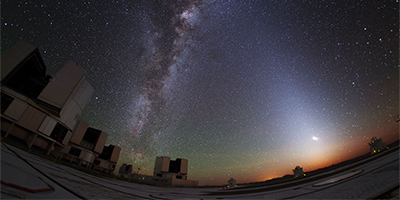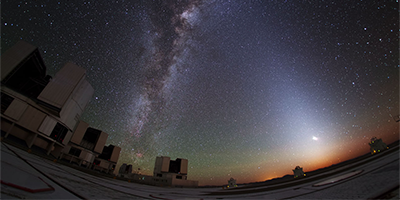Particle Weighing in the Early Universe
Certain models predict that the dark energy that accelerates the Universe’s expansion is a field that evolves over cosmological times. This could mean that certain fundamental quantities related to forces and masses were different long ago. However, a new analysis of the spectrum from a very distant quasar finds no evidence of deviation in molecular lines produced 12 billion years ago, thus implying no change in the mass ratio of the proton to the electron.
One possible explanation for dark energy is that it comes from an all-pervasive scalar field, similar to the Higgs field. Such a field would likely interact with other particles, and these interactions could influence fundamental quantities, causing them to change as the scalar field evolves over time. To check for such evolution, scientists often study distant astrophysical bodies, whose light was emitted billions of years ago.
For the proton-electron mass ratio, astronomers look for unexpected shifts in the wavelengths at which molecules absorb light. Most molecules can only be seen in relatively nearby objects, but the hydrogen molecule ( ) is abundant enough to be observed at great distances. Wim Ubachs of VU University Amsterdam, the Netherlands, and his colleagues analyzed the spectrum of a very distant quasar (J1443+2724) and identified absorption lines from a galaxy in front of the quasar. This absorption signal was etched into the spectrum when the Universe was just 1.5 billion years old. The lines showed no shift (beyond the normal redshift) compared to values measured on Earth, allowing the authors to place an upper bound of a few parts per million on a varying proton-electron mass ratio. The results imply that a dark energy scalar field—if it exists—has evolved very little over the age of the Universe.
This research is published in Physical Review Letters.
–Michael Schirber





